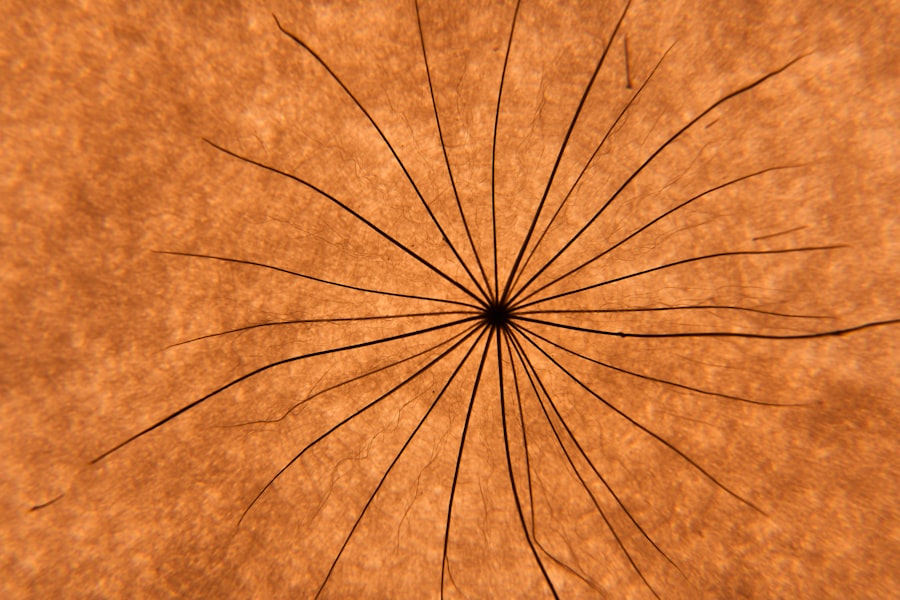The Drake Passage, a body of water situated between the southern tip of South America and Antarctica, is renowned for its tumultuous seas and significant geographical importance. Named after the English explorer Sir Francis Drake, who navigated these waters in the late 16th century, the passage serves as a critical conduit for maritime traffic between the Atlantic and Pacific Oceans. Stretching approximately 800 kilometers (500 miles) wide, it is often characterized by its unpredictable weather patterns and rough seas, making it one of the most challenging maritime routes in the world.
This passage is not merely a geographical feature; it is a vital ecological zone that influences global ocean currents and climate patterns. The unique positioning of the Drake Passage allows for the mixing of warm and cold waters, which plays a crucial role in regulating temperatures across the globe. As such, it has garnered attention from scientists and explorers alike, who seek to understand its complexities and the impact it has on both marine life and human activities.
Key Takeaways
- The Drake Passage is a narrow body of water between South America’s Cape Horn and the South Shetland Islands of Antarctica, known for its turbulent seas and strong winds.
- The Cold Circumpolar Current flows through the Drake Passage, connecting the world’s oceans and playing a crucial role in regulating global climate patterns.
- The Drake Passage acts as a natural barrier, influencing the exchange of heat and moisture between the Pacific and Atlantic Oceans, impacting weather patterns and ocean circulation worldwide.
- The unique marine life in the Drake Passage includes a diverse range of species, from krill and squid to seals and whales, making it a vital area for ecological research and conservation efforts.
- The Drake Passage has a rich historical significance, with explorers and sailors navigating its treacherous waters for centuries, contributing to the lore and legend of this iconic maritime route.
The Cold Circumpolar Current
One of the most significant features of the Drake Passage is the Cold Circumpolar Current, which flows continuously around Antarctica. This current is a product of the unique geography of the region, where the landmass of Antarctica acts as a barrier, allowing cold waters to circulate freely without interruption. The Cold Circumpolar Current is instrumental in maintaining the frigid temperatures of the Southern Ocean and plays a pivotal role in global oceanic circulation.
The current’s influence extends far beyond its immediate vicinity. It helps to regulate climate patterns by transporting cold water northward, which in turn affects weather systems across the globe. The interaction between this current and warmer oceanic waters creates a dynamic environment that supports a diverse range of marine ecosystems.
As such, understanding the Cold Circumpolar Current is essential for comprehending broader climatic changes and their implications for both marine and terrestrial life.
The Role of the Drake Passage in Global Climate

The Drake Passage serves as a critical component in the Earth’s climate system, acting as a conduit for heat exchange between the Southern Ocean and other oceanic bodies. The mixing of warm and cold waters within this passage contributes to the regulation of global temperatures, influencing weather patterns far beyond its geographical boundaries. This interaction is particularly important in the context of climate change, as shifts in ocean currents can lead to significant alterations in weather systems worldwide.
Moreover, the Drake Passage plays a vital role in carbon cycling. The cold waters of the Southern Ocean absorb large amounts of carbon dioxide from the atmosphere, helping to mitigate the effects of climate change. This process is crucial for maintaining ecological balance and supporting marine life.
As scientists continue to study the implications of climate change on ocean currents, the Drake Passage remains a focal point for understanding how these changes may impact global weather patterns and marine ecosystems.
Unique Marine Life in the Drake Passage
| Species | Category | Population |
|---|---|---|
| Krill | Invertebrate | Billions |
| Penguin | Bird | Millions |
| Albatross | Bird | Thousands |
| Seal | Mammal | Tens of thousands |
The Drake Passage is home to an astonishing array of marine life, making it one of the most biodiverse regions in the world’s oceans. The nutrient-rich waters support a variety of species, including krill, which serve as a fundamental food source for larger animals such as whales, seals, and seabirds. The presence of these organisms creates a vibrant ecosystem that thrives in the harsh conditions of the passage.
In addition to krill, various species of fish, including Antarctic toothfish and icefish, inhabit these waters. The unique adaptations of these species allow them to survive in extreme cold and high-pressure environments. Furthermore, the passage is frequented by migratory species such as humpback whales and orcas, which travel through these waters during their seasonal migrations.
The rich biodiversity found in the Drake Passage underscores its ecological significance and highlights the need for ongoing research and conservation efforts.
Historical Significance of the Drake Passage
Historically, the Drake Passage has been a site of exploration and adventure since its discovery by European navigators. Sir Francis Drake’s voyage in 1578 marked one of the first recorded passages through these treacherous waters, paving the way for future explorers seeking new trade routes and territories. The passage became a critical route for whalers and sealers in the 19th century, who exploited its rich marine resources.
The historical significance of the Drake Passage extends beyond exploration; it has also played a role in geopolitical dynamics. Control over maritime routes has often been contested throughout history, with nations vying for access to these vital waterways. The passage’s strategic importance continues to be relevant today, as it serves as a gateway to Antarctica and is crucial for scientific research and environmental monitoring.
The Challenges of Navigating the Drake Passage

Navigating the Drake Passage presents numerous challenges due to its notorious weather conditions and unpredictable seas. Sailors often encounter strong winds, towering waves, and rapidly changing weather patterns that can make even experienced mariners apprehensive. The combination of these factors has earned the passage a reputation as one of the most dangerous maritime routes in existence.
Despite advancements in navigation technology and weather forecasting, traversing the Drake Passage remains a formidable task. Ships must be equipped to handle extreme conditions, and crews must be well-trained to respond to emergencies that may arise during their journey. The challenges posed by this passage serve as a reminder of nature’s power and unpredictability, emphasizing the need for respect and caution when navigating these waters.
Research and Exploration in the Drake Passage
The Drake Passage has become a focal point for scientific research and exploration due to its unique ecological characteristics and significance in global climate systems. Researchers from around the world conduct studies in this region to better understand ocean currents, marine biodiversity, and climate change impacts. The passage serves as a natural laboratory for scientists seeking to unravel the complexities of oceanic processes.
Numerous research expeditions have been launched into the Drake Passage, utilizing advanced technologies such as remotely operated vehicles (ROVs) and autonomous underwater vehicles (AUVs) to explore its depths. These explorations have yielded valuable data on marine ecosystems and have contributed to our understanding of how climate change affects ocean health. As interest in Antarctic research continues to grow, the Drake Passage remains an essential area for ongoing scientific inquiry.
Environmental Concerns in the Drake Passage
As awareness of environmental issues increases globally, concerns regarding the ecological health of the Drake Passage have come to the forefront. The region faces threats from climate change, overfishing, and pollution, all of which pose risks to its delicate marine ecosystems. Rising sea temperatures can disrupt food chains and alter species distributions, while increased shipping traffic raises concerns about oil spills and other forms of pollution.
Efforts are underway to address these environmental challenges through international cooperation and conservation initiatives. Organizations such as the Commission for the Conservation of Antarctic Marine Living Resources (CCAMLR) work to establish sustainable fishing practices and protect vulnerable marine habitats within the passage. As global attention shifts toward preserving our oceans, safeguarding the ecological integrity of the Drake Passage will be crucial for future generations.
The Drake Passage as a Gateway to Antarctica
The Drake Passage serves as a vital gateway to Antarctica, facilitating access for researchers, tourists, and supply vessels alike. Its strategic location makes it an essential route for scientific expeditions aimed at studying climate change impacts on polar regions. The passage allows researchers to transport equipment and personnel necessary for conducting studies on ice cores, glacial movements, and marine ecosystems.
Tourism has also increased in recent years, with adventure seekers drawn to explore Antarctica’s pristine landscapes and unique wildlife.
However, this influx of visitors raises concerns about environmental impacts and underscores the need for responsible tourism practices in this fragile region.
The Drake Passage in Popular Culture
The Drake Passage has captured public imagination through various forms of popular culture, from literature to film. Its reputation as a treacherous waterway has inspired countless tales of adventure and survival at sea.
Documentaries exploring Antarctic exploration frequently feature segments on the Drake Passage, showcasing its breathtaking beauty alongside its inherent dangers. These portrayals contribute to a growing awareness of environmental issues facing polar regions while simultaneously celebrating their awe-inspiring landscapes. As popular culture continues to evolve, representations of the Drake Passage will likely remain prominent as symbols of adventure and exploration.
Future Prospects for the Drake Passage
Looking ahead, the future prospects for the Drake Passage are intertwined with broader global challenges such as climate change and environmental conservation. As scientists continue to study this vital waterway, there is hope that increased understanding will lead to more effective conservation strategies aimed at protecting its unique ecosystems. Collaborative international efforts will be essential in addressing threats posed by climate change while ensuring sustainable practices are implemented.
Moreover, advancements in technology may enhance navigation safety through improved forecasting models and real-time monitoring systems. As interest in Antarctic research grows alongside tourism opportunities, striking a balance between exploration and conservation will be crucial for preserving this remarkable region for future generations. The Drake Passage stands not only as a gateway to Antarctica but also as a symbol of humanity’s ongoing quest for knowledge about our planet’s oceans and their vital role in sustaining life on Earth.
The Drake Passage is a crucial component of the global ocean circulation system, primarily due to the Antarctic Circumpolar Current (ACC) that flows through it. This current is the world’s largest ocean current and plays a significant role in regulating the Earth’s climate by redistributing heat and nutrients across the globe. For a deeper understanding of the ACC and its impact on global oceanography, you can explore a related article on the topic by visiting MyGeoQuest. This resource provides valuable insights into the dynamics of the ACC and its influence on marine ecosystems and climate patterns.
WATCH NOW! Drake Passage: Earth’s Deadliest Waters Revealed
FAQs
What is the Drake Passage?
The Drake Passage is the body of water between the southern tip of South America and the northern tip of the Antarctic Peninsula. It connects the Atlantic and Pacific Oceans.
What is the Cold Circumpolar Current?
The Cold Circumpolar Current is the largest ocean current in the world, flowing from west to east around Antarctica. It is driven by the strong westerly winds and the configuration of the ocean floor.
How does the Drake Passage relate to the Cold Circumpolar Current?
The Drake Passage is a key location for the Cold Circumpolar Current, as it is the narrowest constriction point for the current’s flow around Antarctica. The strong westerly winds and the lack of any landmass to obstruct the flow make the Drake Passage a crucial part of the current’s circulation.
What are the effects of the Cold Circumpolar Current on the Drake Passage?
The Cold Circumpolar Current brings cold, nutrient-rich waters from the depths of the Southern Ocean into the Drake Passage. This has significant impacts on the marine ecosystem and climate of the region.
Why is the Drake Passage important for scientific research?
The unique oceanographic and atmospheric conditions in the Drake Passage make it an ideal location for studying the interactions between the ocean, atmosphere, and climate. Scientists conduct research in the area to better understand global climate patterns and the effects of the Cold Circumpolar Current on marine life.
